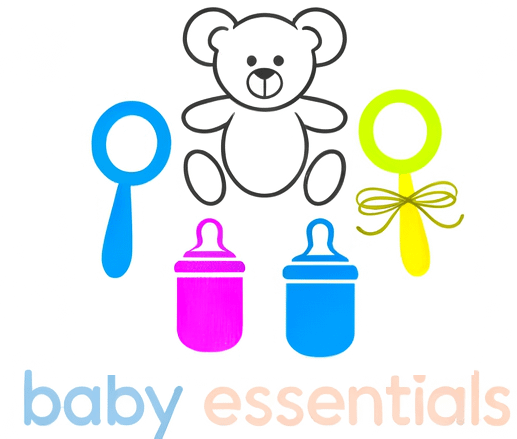Breastfeeding is a deeply personal journey that offers immense health benefits for both mother and baby. For new moms, this experience can be both rewarding and challenging. This comprehensive guide covers everything you need to know about breastfeeding, including invaluable breastfeeding tips for new moms, from getting started and overcoming common hurdles to practical tips for success and self-care. Whether you’re searching for “breastfeeding tips,” “how to get a good latch,” or “breastfeeding positions,” this article is crafted to answer your questions and boost your confidence.
Why Breastfeeding Matters
Breastfeeding provides optimal nutrition for your baby, supporting growth, development, and immunity. Breast milk adapts to your baby’s changing needs, delivering essential nutrients and antibodies. For mothers, breastfeeding can reduce the risk of breast and ovarian cancers, type 2 diabetes, and high blood pressure. It also fosters a unique emotional bond between mother and child.
Breastfeeding Tips for New Moms: Start Early
Initiate Early: Aim to breastfeed within the first hour after birth. Early skin-to-skin contact helps trigger your baby’s natural feeding instincts and supports milk production.
Feed on Demand: Newborns typically need to feed every 1–3 hours, about 8–12 times in 24 hours. Frequent feeding helps establish your milk supply and ensures your baby gets enough nourishment.
Exclusive Breastfeeding: For the first six months, exclusive breastfeeding is recommended, meaning no other food or drink, not even water, is needed. Breast milk alone is sufficient to meet all your baby’s nutritional needs during this period.
Breastfeeding Positions and Latch Techniques
Finding a comfortable position and achieving a good latch are crucial for successful breastfeeding. Here are some of the most effective positions:
Cradle Hold: Baby’s head rests in the crook of your arm, facing your breast, body aligned in a straight line. This is the most traditional position and works for most moms.
Cross-Cradle Hold: Support your baby with the arm opposite to the breast being used, guiding the head with your hand. This is great for newborns and improving latch.
Football (Clutch) Hold: Baby is tucked under your arm (like a rugby ball), supported at your side. This is ideal for C-section recovery or for moms of twins.
Side-Lying Position: Lie on your side with the baby facing you, both relaxed. This position is perfect for night feeds or post-C-section recovery.
Tips for a Good Latch
- Hold your baby close, tummy to tummy, with nose level to your nipple.
- Let your baby’s head tip back slightly so their top lip brushes your nipple, encouraging a wide mouth.
- Bring your baby to the breast (not the breast to the baby) and let them latch themselves.
- Ensure your baby takes a large mouthful of breast, not just the nipple. Their chin should touch your breast, with more areola visible above the top lip than below the bottom lip.
- Avoid pressing on the back of your baby’s head; support the neck and shoulders instead.
Establishing a Good Milk Supply
- Feed Frequently: Regular feeding stimulates milk production. Expressing milk via breastfeeding or pumping every 2–3 hours encourages your body to produce more milk.
- Stay Hydrated and Nourished: Drink plenty of fluids and eat a balanced diet rich in whole grains, fruits, vegetables, and protein to support milk production.
- Skin-to-Skin Contact: Holding your baby skin-to-skin, especially in the early days, promotes bonding and increases milk supply.
- Rest and Reduce Stress: Fatigue and stress can impact milk supply. Prioritise rest and seek support from family or friends when possible.
Reading Your Baby’s Hunger Cues
Feeding your baby on demand is key to successful breastfeeding. Watch for early hunger cues such as:
- Sucking on fingers or fists
- Rooting (turning head toward your breast)
- Lip-smacking or licking lips
- Fussiness or restlessness
Crying is a late hunger cue. Try to feed your baby before they become upset for a smoother feeding experience.
Common Breastfeeding Challenges and Solutions
Sore Nipples:
- Ensure a deep latch; pain often signals a shallow latch.
- Use nipple creams or expressed breast milk for relief.
- Let nipples air-dry after feeds.
Engorgement:
- Feed frequently and don’t skip feeds.
- Use warm compresses before feeding and cold compresses after.
- Hand express or pump a little milk to relieve pressure if needed.
Low Milk Supply:
- Feed more often and ensure an effective latch.
- Try breast compression during feeds.
- Consult a lactation consultant if concerned.
Oversupply or Forceful Let-Down:
- Feed from one breast per session to manage oversupply.
- Use positions like side-lying or football hold to reduce the milk flow force.
- Let excess milk spray onto a towel if the baby chokes or sputters.
Blocked Ducts and Mastitis:
- Continue breastfeeding to clear blockages.
- Massage the affected area and apply warm compresses.
- Seek medical advice if you develop fever or flu-like symptoms.
Essential Breastfeeding Supplies
- Nursing bras and tops for comfort and easy access
- A nursing pillow to support the baby and relieve arm strain
- Breast pump for expressing milk, relieving engorgement, or building a freezer stash
- Nipple cream to soothe sore or cracked nipples
- Nursing pads to absorb leaks and keep you dry
- Water bottle to stay hydrated during feeds
Tips for Breastfeeding in Public
- Practice at home with a nursing cover or scarf for privacy.
- Wear nursing-friendly clothing for easy access.
- Know your legal rights to breastfeed in public spaces in your country.
When to Seek Help
If you experience persistent pain, your baby isn’t gaining weight, or you have concerns about milk supply or latch, reach out to a lactation consultant or healthcare provider. Support groups and helplines can also offer valuable guidance and reassurance.
Self-Care for Breastfeeding Moms
- Rest whenever possible.
- Accept help from family and friends.
- Prioritise your nutrition and hydration.
- Take breaks to relax and recharge.
Remember, breastfeeding is a learned skill for both you and your baby. Be patient with yourself and seek support when needed.
Frequently Asked Questions
How do I know if my baby is getting enough milk?
Look for regular wet and dirty nappies, steady weight gain, and a satisfied baby after feeds.
Can I breastfeed after a C-section?
Yes. Positions like the football hold or side-lying can be more comfortable post-surgery.
When should I introduce a bottle or dummy?
Wait until breastfeeding is well established, usually after 4–6 weeks.
Is it normal for breastfeeding to hurt?
Some discomfort in the first few days is common, but ongoing pain indicates a problem with latch or position.
Conclusion
Breastfeeding is a journey filled with learning, patience, and love. With the right information, practical tips, and support, you can overcome challenges and enjoy the many benefits breastfeeding offers you and your baby. Trust your instincts, seek help when needed, and remember every drop of breast milk is valuable.
For more guidance, connect with local lactation consultants, join breastfeeding support groups, and bookmark trusted resources for ongoing support.
This guide is for informational purposes and does not replace professional medical advice. Always consult your healthcare provider for personalised support.

